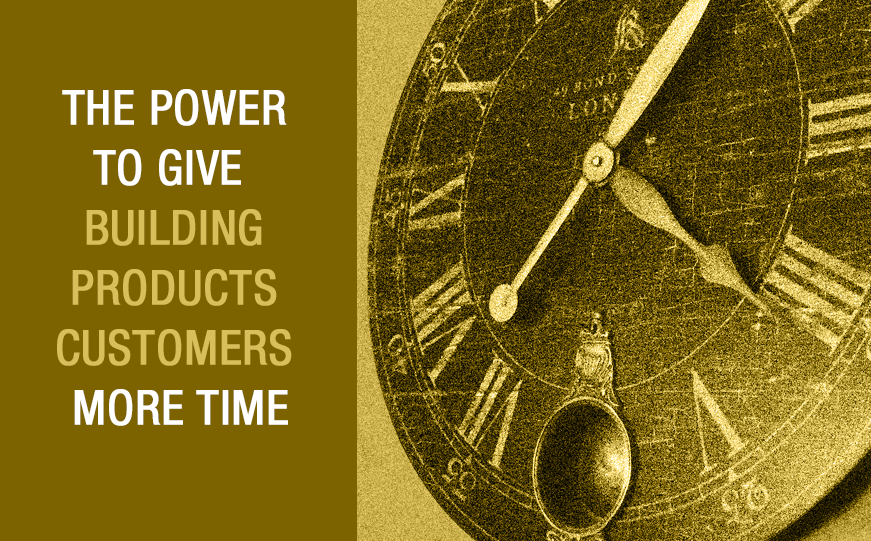“Alexa, order me a truckload of three-quarter-inch OSB.”
At first, the Amazon Echo, Google Home, and similar voice-activated assistants seemed like a bit of a novelty, allowing consumers to get the latest news, listen to music, and maybe even play a game or two.
But quickly, these devices have shown their power to transform the way people buy things. Today, they are touted as allowing purchasers to instruct virtual “digital managers” to place an order for inventory replacement on a whim, in the flash of a moment.
Soap, dog food… even non-perishable produce. Anything you use on a regular basis. All you need is a simple voice command and the products will be automatically ordered, shipped and delivered to your door as quickly as the next day. No wonder Amazon just invested one billion dollars for a doorbell. And soon, drones will be opening your garage doors to drop shipments within hours.
For consumer packaged goods brands, the implications are obviously huge.
No more going to the store, walking down the aisles, reading labels, seeing what’s on sale, making your decision (perhaps an impulse decision), and heading to the checkout. What once took a minimum of a half-hour now takes a mere few seconds. The need to be at the very top of people’s consideration-set is paramount. People are making snap decisions about the brands they buy, ditching comparison shopping — and possible savings — for the ultimate in speed and convenience.
And you thought ranking at the top of Google searches was hard.
Implications for Building Products Brands
Of course, it seems unlikely that Alexa-style ordering will make its way immediately to the building products category. We’re not talking about tin foil and toilet paper, after all. We’re talking about expensive, often bulky products that have a real differentiated function… where features and benefits, quality and price must be carefully considered. Most big box and multi-line distribution business analysts are confident about the “moat” that currently protects this channel.
Or will it?
While it’s true that the purchasing dynamics are different than those of CPG products, there is one constant… Time.
Builders, contractors and other tradespeople embrace time savings and convenience as much as any consumer. Perhaps more so.
So it’s not hard to envision a service like Alexa (or another tool, modeled after similar algorithms) that will help pros order products for the buildings they construct, remodel and repair. In fact, it’s already starting.
There is an app available to facilities managers for commercial buildings that actually anticipates their supply needs and places the orders automatically. So where Alexa takes a few seconds to place an order, a service like this takes very little, if any time at all.
Could a service like this find its way into building products? We think, without a doubt, yes.
So how can you and your building products brands be ready for this evolving dynamic?
Embrace new technology
Technology is not something to be feared. If your brand is stuck in a reputation of the “old way” of doing things, even if it currently appears to be working just fine, it’s high time to project your brand-promise and mind-share into the 21st century.
Don’t be afraid to experiment with an innovative process that works — and what helps you better connect with your customers — and in doing so, creating more aligned loyalty.
Again, experimentation is key. You don’t need to go all-in right away, but try several new things to see what works and what doesn’t work for you. We prescribe to the 80/20 rule: retain 80% of what’s working and prune 20% of outdated processes. In their place, introduce 20% new innovation and observe the adoption.
Make your brand about more than just products
One of the other dangers with Alexa for CPG brands is that they can easily be replaced with low-priced, private-label brands. We’re witnessing the same dynamic in construction and building materials, as distributors are actively introducing their own “private label” siding, decking and trim. With consolidation in this channel at a fever pitch, other products will soon be at risk.
The way to combat that is to make your brand mean more than just features and benefits. Connect with your customers and their influencers on a human level. Provide them with information they can use to make their work, and lives, easier.
The approaches to accomplish this are endless. Highly relevant content marketing. Corporate social responsibility. Issue advocacy. It just has to make sense and be authentic to your brand.
Provide the ordering service yourself
Of course, the easiest way to make sure you’re in a leadership position in technology is to be the one to provide it.
It starts with knowing who your customers are, and the challenges they face. With that information — and with the help of smart technology — you can develop portals that makes it easy, if not second nature, to order your products.
Remember, what you’re giving your customers after all is time. It’s the one thing that’s limited for everyone.
Are you listening Alexa?




